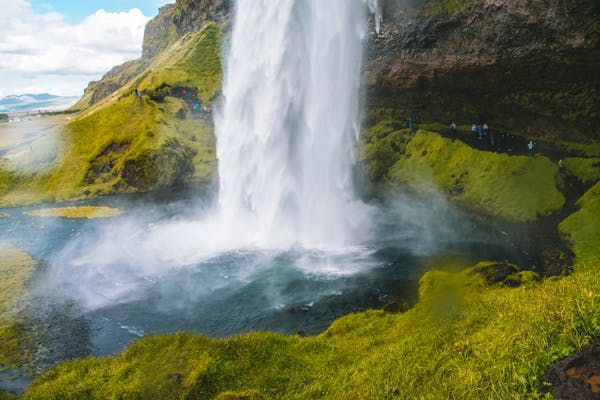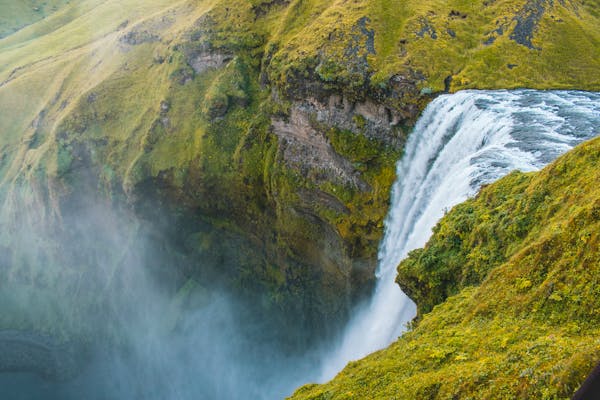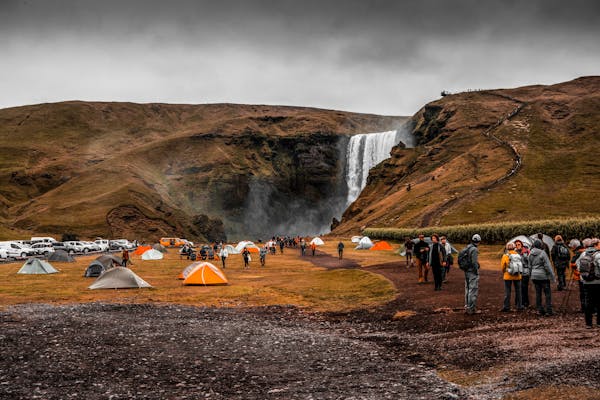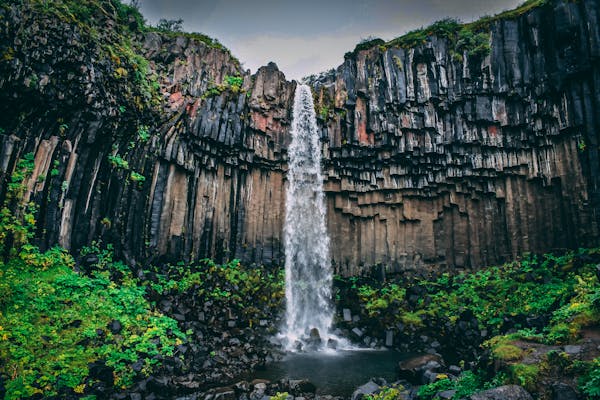Where to get water when hiking in Iceland.Where to Get Water When Hiking in Iceland A Complete Guide. Iceland is known for its stunning geographies, including glaciers, gutters, and falls, making it an ideal destination for hiking suckers. While the country’s natural beauty is inarguable, it’s important to know where to get water when hiking in Iceland. This companion will help you understand the stylish places to find water on the trail, along with safety tips and practical advice for staying doused.
1. Using Natural Water Sources in Iceland Rivers, Aqueducts, and Glaciers
Drinking from Freshwater Rivers and Aqueducts
Iceland is blessed with numerous gutters and aqueducts that offer some of the purest water in the world. When hiking, look for fast-moving gutters and aqueducts as a source of drinking water. These waters are generally safe for consumption due to Iceland’s low pollution situation, but it’s stylish to avoid drinking from still or stagnant water sources.
Glacier Water Is It Safe to Drink?
Glacier water is another natural water source in Iceland, but caution is demanded. While it appears clean, it can occasionally carry fine sediments that make the water cloudy. However, let it sit for many twinkles to allow the sediments to settle, or use a water sludge to ensure safety If you choose to drink glacier water.
2. Exercising falls as a Water Source

Drinking Directly from falls
falls are one of Iceland’s most notorious features, and the water flowing from them is generally fresh and clean. However, you can fill your water bottle directly from the cascading water, If you’re near a cascade while hiking. It’s important to ensure that the cascade is sourced from a glacier or a swash and not near mortal agreements where the water may be defiled.
Staying Safe When Approaching Falls
While falls give a dependable source of water, safety should be a precedence. The jewels around falls can be slippery, so take care when approaching the edge to fill your bottle. It’s also judicious to avoid falls that are located near geothermal areas, as the water could be mixed with hot springs and may not be safe for drinking.
3. Bringing a Water Filter or Purification Tablets
The Benefits of Using Water Pollutants
While the importance of Iceland’s water is safe to drink, it’s wise to carry a movable water sludge when hiking. Pollutants can help remove any implicit bacteria or fine patches, especially if you’re uncertain about the water source. This is especially useful when hiking in remote areas where water sources may be limited or lower dependable.
When to Use Sanctification Tablets
sanctification tablets are another option for treating water when hiking in Iceland. These tablets are featherlight, easy to carry, and effective in killing bacteria and contagions. Use them if you have dubieties about the water quality, similar to when drinking from slower-moving aqueducts or water near agreements.
4. Collecting Rainwater for Drinking
Setting Up a Simple Rainwater Collection System
still, rainwater can be a useful backup source of drinking water, If you are hiking for several days in Iceland. To collect rainwater, use a tarp or indeed your roof fly to catch and channel the water into a vessel. This system ensures you have a water source in case other options are limited.
Purifying Rainwater for Safety
While rainwater in Iceland is generally clean, it’s judicious to sludge or boil it before drinking to exclude any implicit pollutants. This is especially important if the water has collected on shells that may have dirt or other remains. Using a simple movable water sludge can make the rainwater safe for consumption.
5. Exercising hut Water Sources on Popular Hiking Trails

Accessing Water from Mountain Hooches
Popular hiking routes like the Laugavegur Trail have mountain hooches where trampers can rest and refill their water bottles. These hooches generally have water from near aqueducts or collected rainwater, which is safe for drinking. Always check if the water source is indicated as drinkable, and use sanctification styles if there’s any mistrustfulness.
Planning Your Route Grounded on Hut Locales
still, plan your stops to coincide with these locales for easy access to water, If you’re hiking along trails with hooches. This reduces the quantum of water you need to carry, lightening your cargo. It’s a practical approach to for multi-day hikes, especially in areas where natural water sources are less frequent.
6. Avoiding Geothermal Water Sources
Understanding Why Geothermal Water Is Unsafe to Drink
Iceland is known for its geothermal exertion, which results in hot springs and geysers. Still, water from geothermal sources frequently contains high situations of minerals and can be dangerous if consumed. Avoid drinking water that has a sulfurous smell or comes from hot springs, as it may be defiled with chemicals or bacteria.
Relating Geothermal Areas on the Map
Before your hike, familiarize yourself with the locales of geothermal areas using a detailed chart. These areas are generally pronounced and can be fluently avoided. Sticking to known brackish sources ensures that you have a safe and dependable force of drinking water throughout your hike.
7. Carrying Enough Water for Long or Remote Hikes
Knowing How important Water to Bring
For longer hikes in Iceland’s more remote areas, it’s pivotal to carry enough water. Aim for at least 2- 3 liters of water per day, depending on the difficulty of the hike and rainfall conditions. However, carrying redundant water is essential to avoid dehumidification, If you anticipate limited access to water sources.
Using Hydration Packs for Convenience
Hydration packs are an accessible way to carry water while keeping your hands free for touring poles. They generally have an erected-in force with a drinking tube, making it easy to stay doused without stopping. This is especially useful when hiking grueling trails where maintaining a steady pace is important.
8. Exercising original Knowledge of Safe Water Sources

Asking Locals or Attendants for Advice
When hiking in Iceland, original knowledge can be inestimable. Locals, demesne rangers, or attendants frequently know the stylish water sources along the trails and can advise on which areas to avoid. Don’t vacillate to ask for recommendations, especially if you’re hiking in strange terrain.
Joining Guided Hikes for Added Safety
still, consider joining a guided hike, If you’re new to hiking in Iceland or want redundant peace of mind. Professional attendants are familiar with the trails and can help identify safe water sources. This is particularly helpful in areas where natural water sources are less predictable.
9. Staying Hydrated During Cold Weather Hikes
Feting the threat of Dehumidification in Cold Conditions
It’s easy to overlook hydration when hiking in cold rainfall, but staying doused is just as important. Cold air can dehydrate you snappily, especially if you’re wearing layers that make you sweat. Be sure to drink water regularly, indeed if you don’t feel thirsty.
Precluding Water from indurating
When hiking in indurating temperatures, your water can indurate, making it delicate to drink. Use an insulated bottle or carry the water close to your body to keep it from indurating. Adding a bit of warm water to the bottle can also help keep it from turning into ice.
10. Preparing for Hikes Near the Coast
Understanding Saltwater Impurity Pitfalls
Hiking near littoral areas in Iceland presents the threat of saltwater impurity. Avoid drinking from aqueducts or pools that are close to the ocean, as they may contain saltwater or be affected by tidal changes. Stick to inland brackish sources to ensure your water is safe for drinking.
Chancing Freshwater Near the Coast
Still, look for brackish sources similar as aqueducts coming down from the mountains, If you’re hiking near the seacoast. These are generally safe to drink, especially if they’re presto-flowing. Be conservative and ensure that the water isn’t contaminated by the ocean, which could introduce swabs and other contaminations.
FAQs About Getting Water When Hiking in Iceland
- Is It Safe to Drink Directly from Rivers and Aqueducts in Iceland?
- Yes, in utmost cases, it’s safe to drink directly from presto-flowing gutters and aqueducts in Iceland. Still, it’s always safer to use sludge, especially in areas near mortal exertion.
- Should I Use a Water Filter Indeed in Iceland?
- While Iceland’s water is generally clean, using a sludge provides redundant protection, especially if you’re doubtful about the water source. It can help remove any implicit bacteria or sediments.
- Can I Drink Water from Hot Springs or Geothermal Areas?
- No, it isn’t safe to drink water from geothermal sources due to the high mineral content and implicit pollutants. Always use brackish aqueducts, gutters, or filtered rainwater.
Key Tips for Finding Water When Hiking in Iceland
- Use Fast-Flowing Rivers: These are generally the safest natural sources for drinking.
- Avoid Geothermal Water: Stick to brackish aqueducts and gutters.
- Carry a Water Filter: It adds a redundant subcaste of safety when drinking from natural sources.
- Plan Your Stops Near Hooches: use mountain hooches for refilling water bottles.
- Stay Doused in Cold Weather: Drink regularly, indeed if you don’t feel thirsty.
Essential Gear for Accessing Safe Water While Hiking
- Portable Water Filter: A sludge helps ensure the safety of water from natural sources.
- Isolated Water Bottle: Keeps water from indurating in cold conditions.
- Hydration Pack: Allows for accessible and hands-free drinking.
- Water Purification Tablets: Lightweight and effective for treating questionable water.
| Water Source | Safety Considerations | Best Practices |
| Rivers and Streams | Generally safe if fast-flowing; avoid stagnant water. | Drink directly or use a filter for added safety. |
| Glacier Water | Can contain fine sediments; and may appear cloudy. | Let sediments settle or filter the water. |
| Waterfalls | Can contain fine sediments; and may appear cloudy. | Be cautious of slippery rocks when collecting. |
| Rainwater | Generally clean, but may collect dirt. | Filter or boil before drinking. |
| Mountain Huts | Water is often available but may need purification. | Plan to refill at huts along popular trails. |
| Geothermal Water | Unsafe due to high mineral content and possible contaminants. | Avoid drinking from geothermal sources entirely. |
| Coastal Streams | Risk of saltwater contamination near the sea. | Stick to inland streams far from the coast. |
Conclusion
Where to Get Water When Hiking in Iceland
Staying safe-deposit box and Doused in Iceland’s Nature
Knowing where to get water when hiking in Iceland can make your out-of-door adventure safer and more pleasurable. Use natural water sources like gutters, aqueducts, and falls, but always be prepared with a sludge or sanctification system. Avoid geothermal water and plan your water stops, especially on longer hikes.
Preparation and Awareness Are Crucial.
With the right medication, staying doused while hiking in Iceland is manageable. Understanding the geography, carrying proper gear, and using original knowledge will help you find clean and safe water sources. Stay informed, stay safe, and enjoy the stirring beauty that Iceland has to offer.
In conclusion, Iceland offers numerous natural water sources, but it’s important to know where to find them and how to ensure their safety. By following these guidelines, trampers can stay doused and make the utmost of their Icelandic adventures.


[…] rest stations at Indian Garden and the 3-Mile and 1, If you choose the Bright Angel Trail.5- Mile Resthouses for water renewals.“Hiking Out of Phantom Ranch: Essential Guide””Hiking Out of Phantom Ranch: […]
[…] This composition will guide you through the highlights of hiking in the San Rafael Swell, including must- visit trails, medication tips, and perceptivity to help you make the utmost of your trip in this geological wonderland. […]